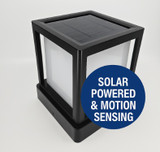Rated Light and Lumen Maintenance Life: Do They Matter?
There is much more to lighting than just the fact that it helps us see in the dark. Have you ever heard of rated life? Rated life is a major part of the lighting and what makes a light work for how long.
Rated life is basically the life value that gets assigned to a particular type of lamp. Any rated life in the hours of a light source (LED or other) applies under operational conditions and is created for failure criteria. If you’re thinking about it statistically, the rated life measure is Bp and is measured in hours. The “P” in the Bp signifies percentage.
So, if a B50 rated life of 1,000 hours equals 50% of the tested lights that have lasted more than 1,000 without failing. B50 is the light’s rated average life. Another example is B10 of 1,000 hours. That means that only 10% of the tested lights failed within 1,000 hours. That means that the product with a B10 should last longer than a product with a B50.
On the other side, we have lumen maintenance life. Lumen maintenance life is the elapsed use time at which the percentage of the lumen maintenance is reached and expressed in hours. Rated lumen maintenance life is different from rated life as it refers to the elapsed use time over which an LED light source maintains the percentage of its initial output of light.
Like rated life, rated lumen maintenance is measured with a few letters. This one is measured in Lp, meaning the percentage of light output. So, if L70 of 30,000 hours means that the LEDs produce 70% of light output at 30,000 hours. If an LED has an L50 of 30,000, it can decay faster than one with the L70.
Whether you plan to work with LED parking garage lighting or roadway lighting, take a look and see what the Bp and Lp are of each light. While any type of Bp and Lp are fine to use, the math you can do using the equations listed above will prove how long each light bulb will last you. In many areas, the law requires parking garage lighting to be on 24 hours a day. If you choose Lp's or Bp's with a poor life rate, they're not going to be able to meet that legal requirement.
Recent Posts
-
How Long Will Solar Powered Lighting Operate in the Rain?
How Solar Light Fixtures Can Run for 10 Rainy Days If you’ve ever wondered how a Commercial solar li …Jul 30th 2025 -
Spotlight - The IL-SPG54 Smart Solar Walkway Light: Where Performance Meets Simplicity
Introducing the IL-SPG54 Smart Solar Walkway Light: Where Performance Meets Simplicity When it comes …Jun 16th 2025 -
Corn Bulb Sale - While supplies last!
⚡ Limited Time Sale – BLE Series Corn Lamps Starting at $24.99! Stock up now while supplies last – p …Jun 11th 2025






